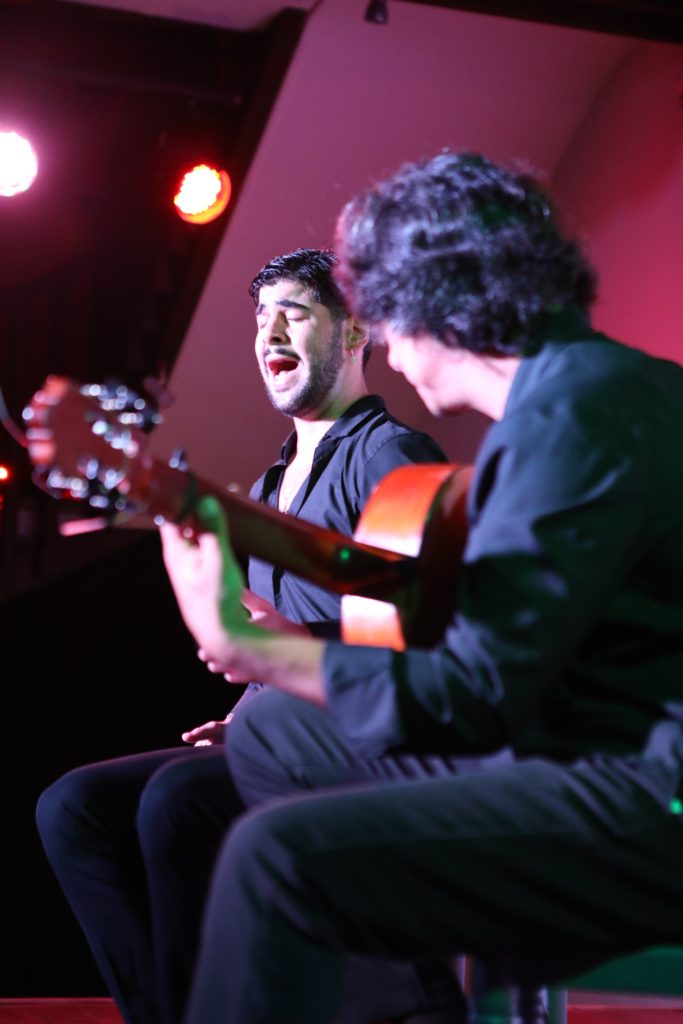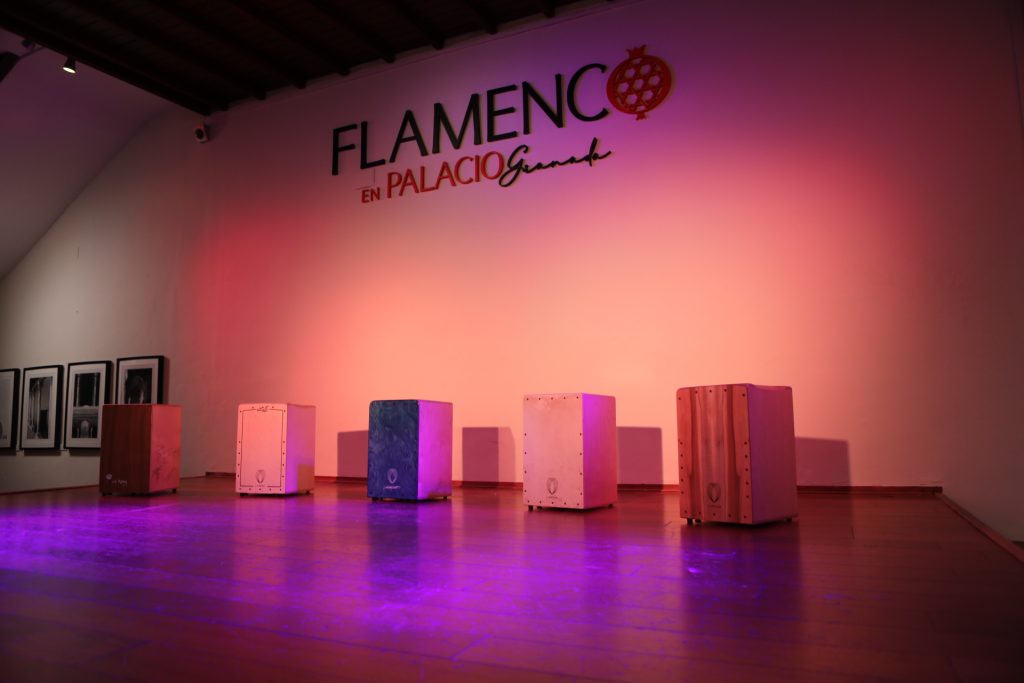Flamenco is made up of sounds that we inevitably associate with this art when we hear them.
Although originally flamenco was composed only of the singer’s voice accompanied by clapping, today it is very difficult to imagine a flamenco tablao without the guitar, the castanets or the cajon.
These instruments have been introduced into flamenco and are currently an essential part of the art itself.
Flamenco Guitar
The exact moment in which the guitar was introduced into flamenco is not known, but it is believed that it was in the mid-19th century, just when flamenco tablaos were in full swing. The arrival of the guitar to this art was a true revolution.
This instrument was incorporated to accompany singing, but little by little it gained ground until it became the true reference for flamenco and consolidated this art as we know it today.
The use of the flamenco guitar helped to structure the flamenco palos and regulate the singing schemes, providing entrances and exits to the melodic accompaniment.

The castanets
The clattering of castanets is another of the sounds that we inevitably associate with flamenco. Furthermore, this instrument provides elegance to the dancers.
Castanets have a very important role in flamenco. Considered a very characteristic instrument of Spanish music, they are part of the cultural heritage of our country.
Although they may seem like a simple instrument to play, the reality is that they require a lot of practice and coordination since the sound of the right hand must be interspersed with that of the left and vice versa.

The drawer
Este instrumento, también parte my identificativa del flamenco, tiene un sonido muy particular que proporciona personalidad a la actuación y que crea una atmósfera única.
Its origin is Peruvian and we owe its incorporation into flamenco to the great Paco de Lucía. In 1977 the guitarist discovered this instrument when he was on tour in South America, its sound captivated him so much that he began to play the guitar with it and found that its sound fit perfectly with the percussion of flamenco.
This sound that captivated Paco de Lucía today is irreplaceable in this art.

The Percussion of the Palms
Claps are another percussion element used in flamenco, and essential. Although it is not an instrument as such, without them flamenco would not be the same.
The clapping is the perfect accompaniment to singing and dancing. With its constant rhythm, it has different techniques and styles depending on the flamenco style they are accompanying.
The people who dedicate themselves to this discipline are known as palmeros, and they dedicate many hours of study and practice to properly accompany singing, guitar and dancing.
Clapping may seem simple, but its execution is much more complex than it may seem at first glance. It marks the rhythm, accentuates the beat of each style, in addition to helping to encourage the artists during the performances.

Cantaora: Estrella Fernández
Flamenco Zapateado
Both clapping and zapateado are an unmistakable and essential part of flamenco. The zapateado is the rhythmic combination of sounds that the dancer makes with the toes and heels of their feet on the tablao, marking the rhythm and merging with the rest of the instruments.
Over time, zapateado has been introduced into most flamenco dance styles, which was not the case at the beginning.

Immerse yourself fully in flamenco and discover first-hand all the instruments that make it up, attending a true flamenco show in a tablao.
